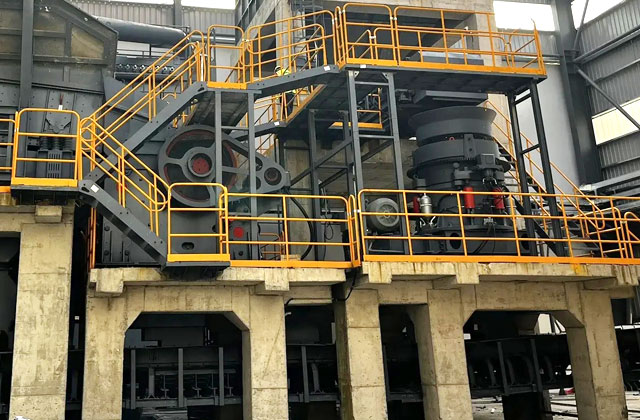Crushing is a critical process in the mining and mineral processing industry, especially when it comes to metal ores. The process involves reducing large chunks of raw ore into smaller pieces to facilitate further processing, such as grinding, separation, and extraction of valuable minerals. There are several types of crushers used in the metal ore industry, each designed to handle specific kinds of material and varying in terms of capacity, efficiency, and the final product size. Here, we will explore the main types of crushers commonly used in the industry.

1. Jaw Crushers
Jaw crushers are one of the most common primary crushers used in the mining and ore processing industry. They consist of two plates, one stationary and one movable, which form a V-shaped chamber. The movable plate moves back and forth to crush the material against the stationary plate. Jaw crushers are particularly effective for handling large, hard materials such as iron ore and gold ore. They are capable of producing a relatively coarse output, which is typically suitable for further processing in secondary crushing stages.
2. Gyratory Crushers
Gyratory crushers are another type of primary crusher, designed for handling very large quantities of material. These crushers operate on a similar principle to jaw crushers but with a circular gap instead of a V-shaped one. The crushing head, shaped like a cone, gyrates within a stationary concave bowl. Gyratory crushers are ideal for high-capacity crushing applications and can process large feed sizes. They are commonly used in large-scale mining operations for primary crushing of hard ores like copper and nickel.
3. Cone Crushers
Cone crushers are used in secondary and tertiary crushing stages. They operate similarly to gyratory crushers but with a steeper cone angle and a smaller feed opening. The material is crushed by compressive forces between a gyrating cone and a stationary outer concave surface. Cone crushers are well-suited for medium to hard materials, including metal ores such as copper and iron. They are known for their high efficiency, consistent product size, and ability to handle abrasive materials.
4. Impact Crushers
Impact crushers use the principle of rapid impact to crush materials. These crushers come in two main types: horizontal shaft impactors (HSI) and vertical shaft impactors (VSI). HSIs are suitable for soft to medium-hard ores and produce a cubical product shape. They operate by striking the material with blow bars mounted on a horizontal rotor. VSIs, on the other hand, are used for producing fine and medium-sized particles and are ideal for ores that require precise shape and size control. They use a high-speed rotor to throw the material against a stationary anvil or rock shelf.
5. Hammer Crushers
Hammer crushers are used primarily for fine crushing of materials. They consist of a high-speed rotor equipped with hammers that impact the material, causing it to shatter and break apart. Hammer crushers are suitable for soft to medium-hard ores and are typically used in smaller-scale operations or as a tertiary crusher in larger plants. They are known for their high reduction ratio and ability to produce fine, uniform product sizes.
Selecting a crusher for metal ores
The selection of the appropriate crusher type depends on various factors, including the nature of the ore, the desired product size, the capacity requirements, and the overall processing flow. Each type of crusher has its advantages and is suitable for specific applications. In modern ore processing plants, a combination of different crushers is often used to achieve optimal performance and efficiency.

